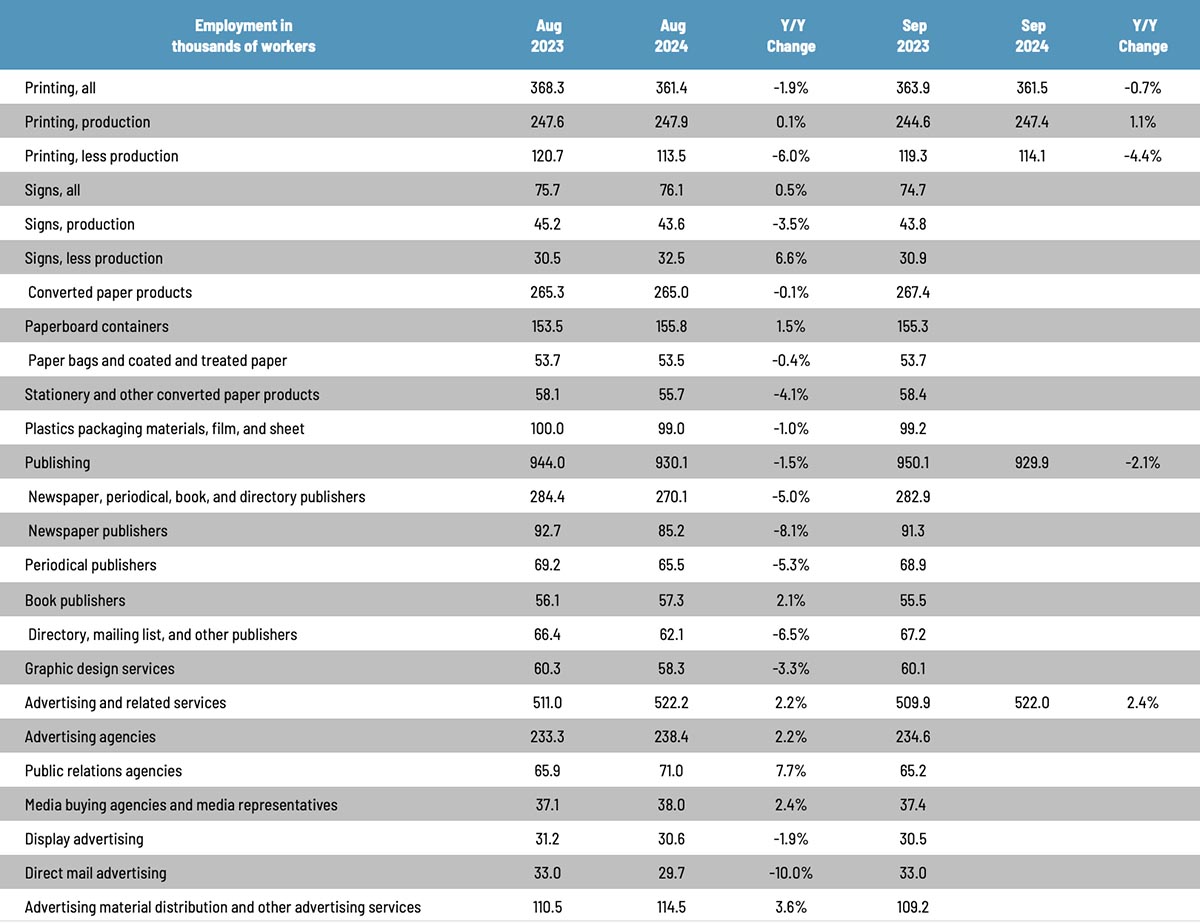
Over the summer, overall printing employment was generally flat, a situation which continued as we headed for autumn. In September, overall printing employment was unchanged, with production employment down 0.2% and non-production employment up 0.5%.
Overall publishing employment was also flat from August to September, as was advertising and related services.
Looking at other business categories, the reporting of which lags a month:
Overall employment in the signage industry was flat from July to August, with sign production employment down 0.9% and non-production up 1.2%.
Converted paper products employment was also flat from July to August, with paperboard container employment up 0.3% and paper bags and coated and treated paper employment up 1.1%.
Looking at some specific publishing and creative segments, from July to August, periodical publishing employment was down 0.5%, while newspaper publishing employment was up down 1.4%, and book publishing was up 0.2%. Graphic design employment was up 1.2% from, ad agency employment was down 0.2%, and PR agencies were down 0.1%. Direct mail advertising employment was down 0.3%.
As for September employment in general, the BLS reported on October 4 that total nonfarm payroll employment increased by 254,000 and the unemployment rate dropped to 4.1%. Job gains occurred in food services and drinking places, health care, government, social assistance, and construction.
Meanwhile, the change in total nonfarm payroll employment for July was revised up by 55,000, and the change for August was revised up by 17,000. Ergo, employment in July and August combined was 72,000 higher than previously reported.
The U-6 rate (the so-called “real” unemployment rate which includes not just those currently unemployed but also those who are underemployed, marginally attached to the workforce, and have given up looking for work) decreased from 7.9% to 7.7%.
The labor force participation rate was unchanged at 62.7% and the employment-to-population ratio increased from 60.0% to 60.2%. The labor force participation rate for 24–54-year-olds ticked down from 83.9% to 83.8%.
The September report was well above economists’ expectations.














